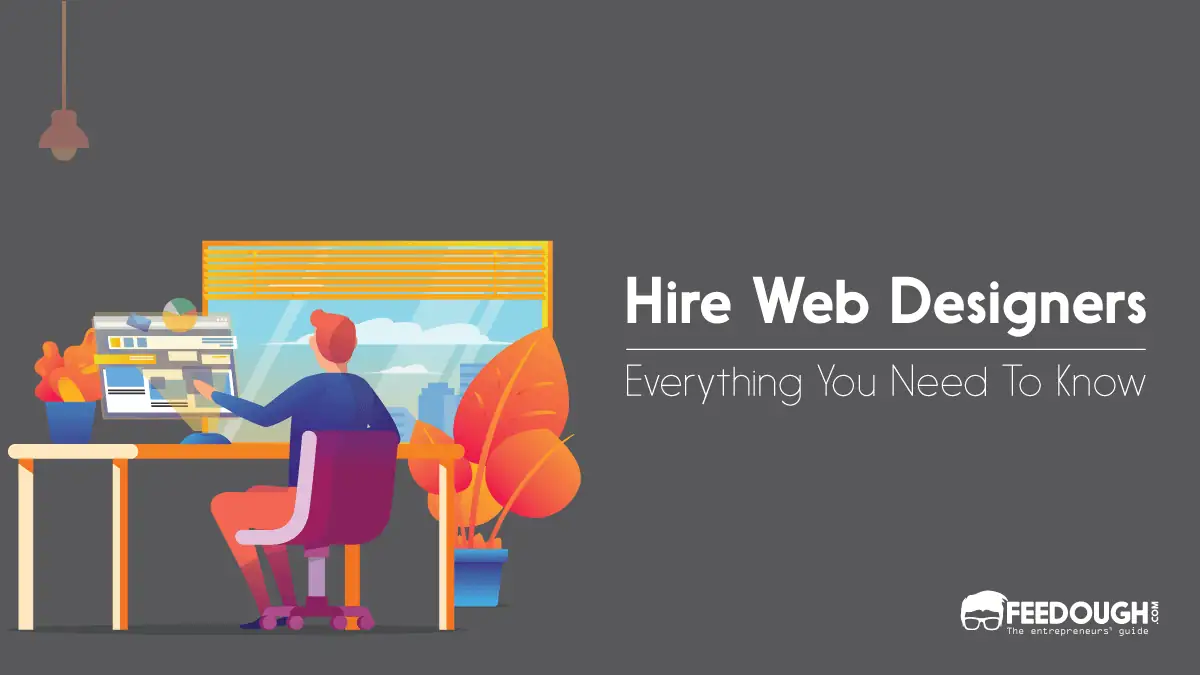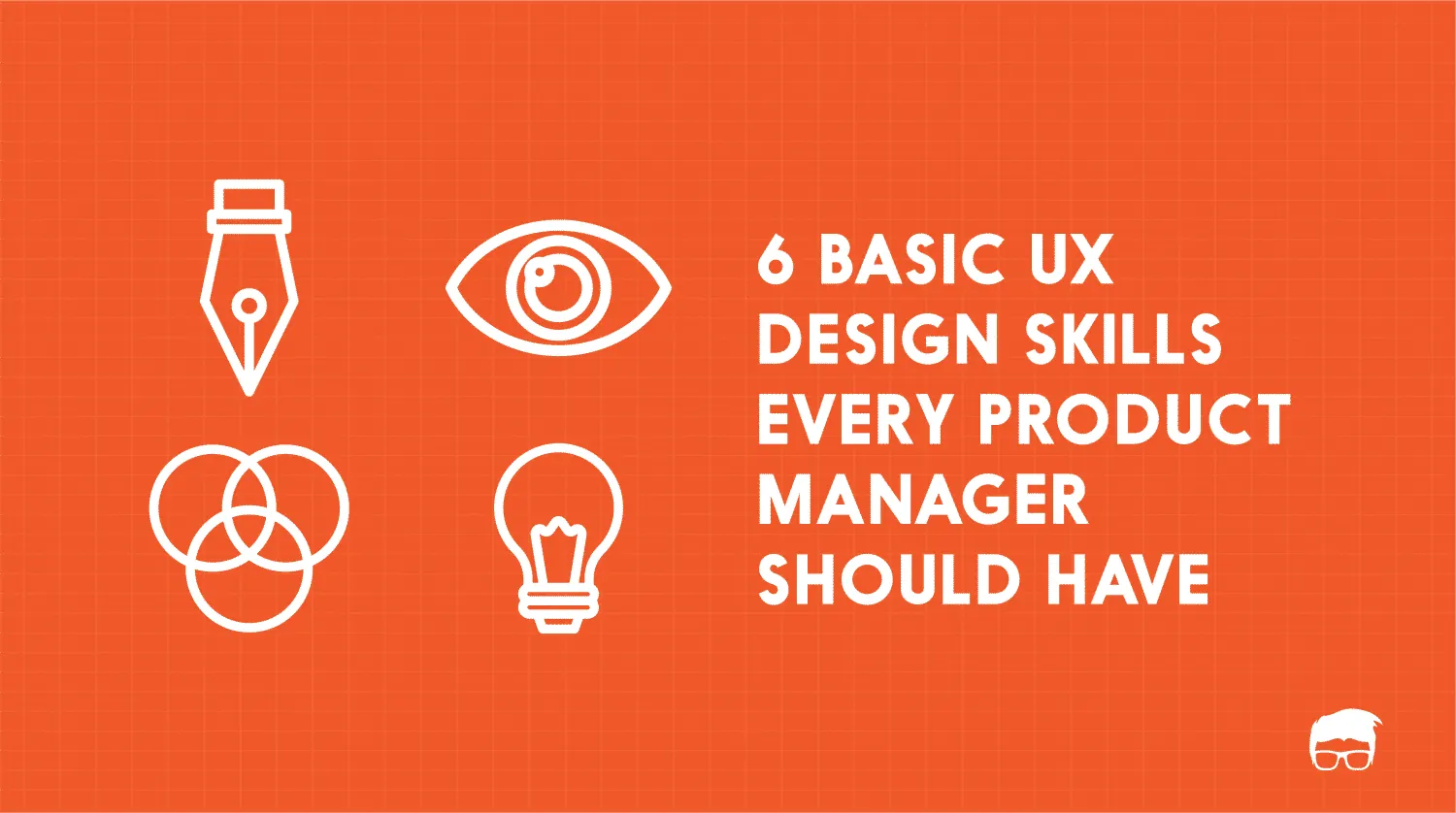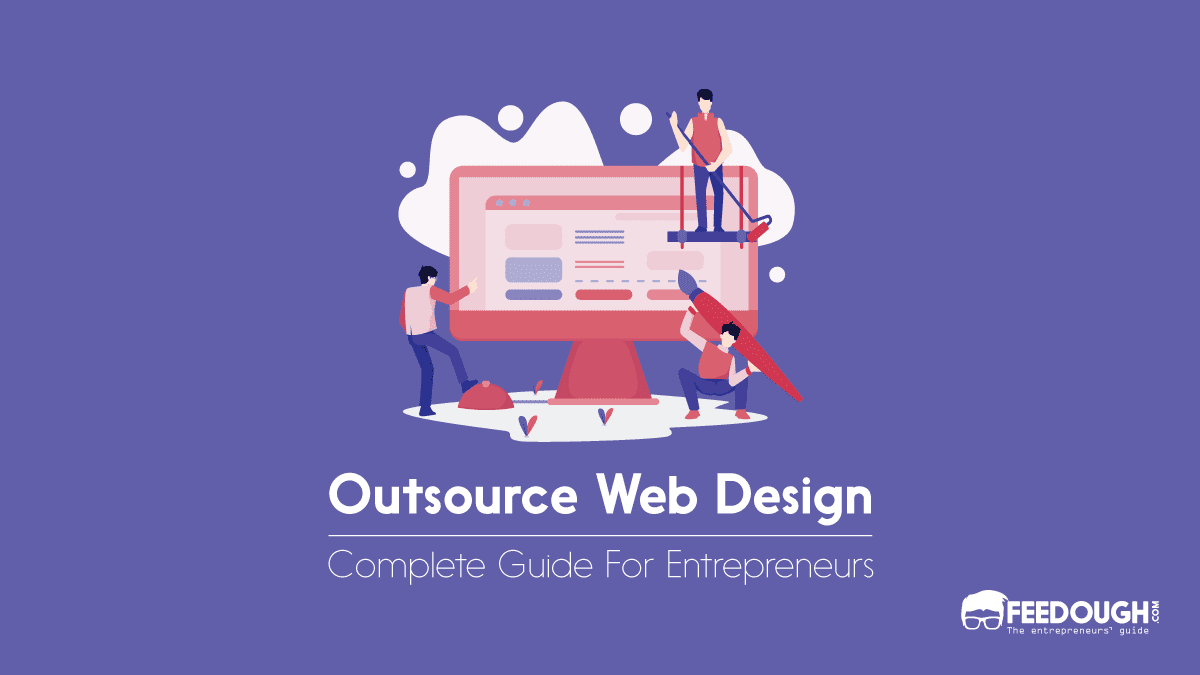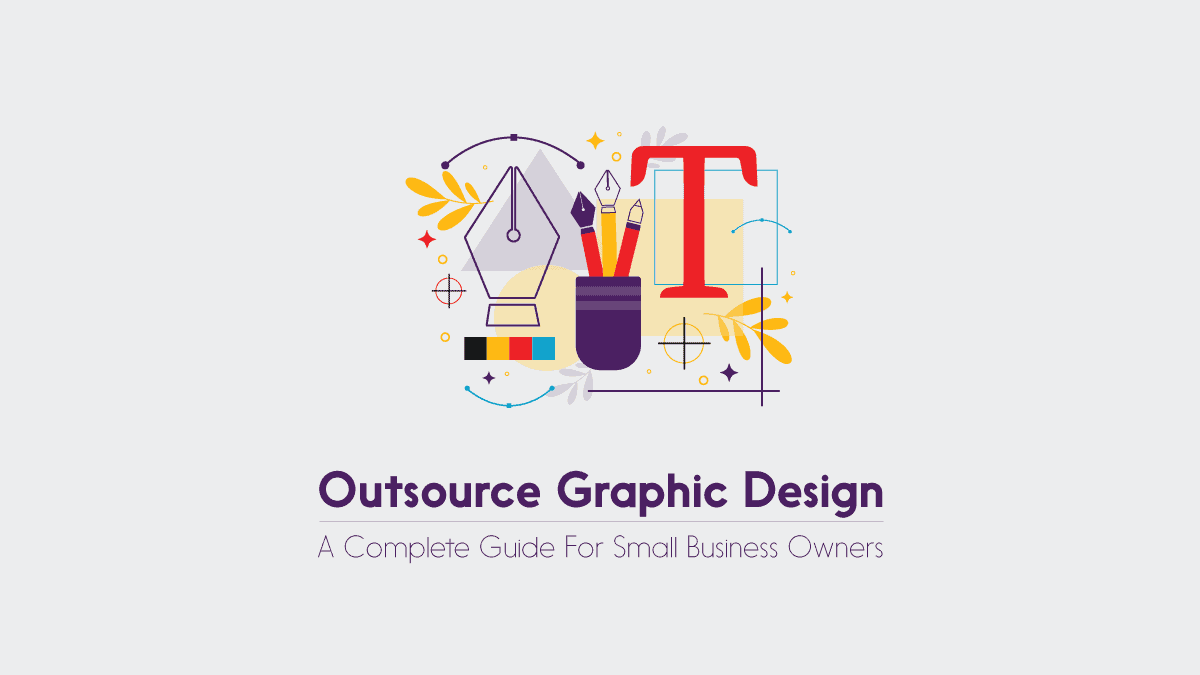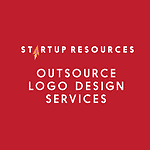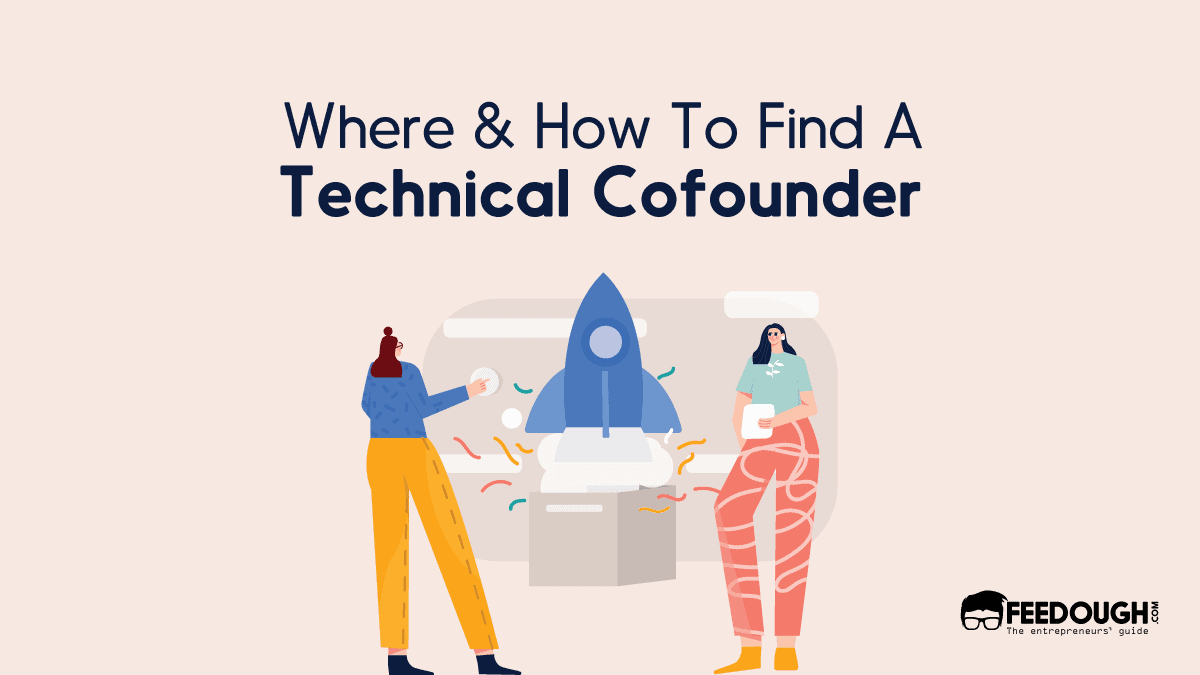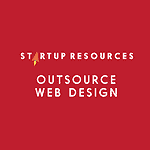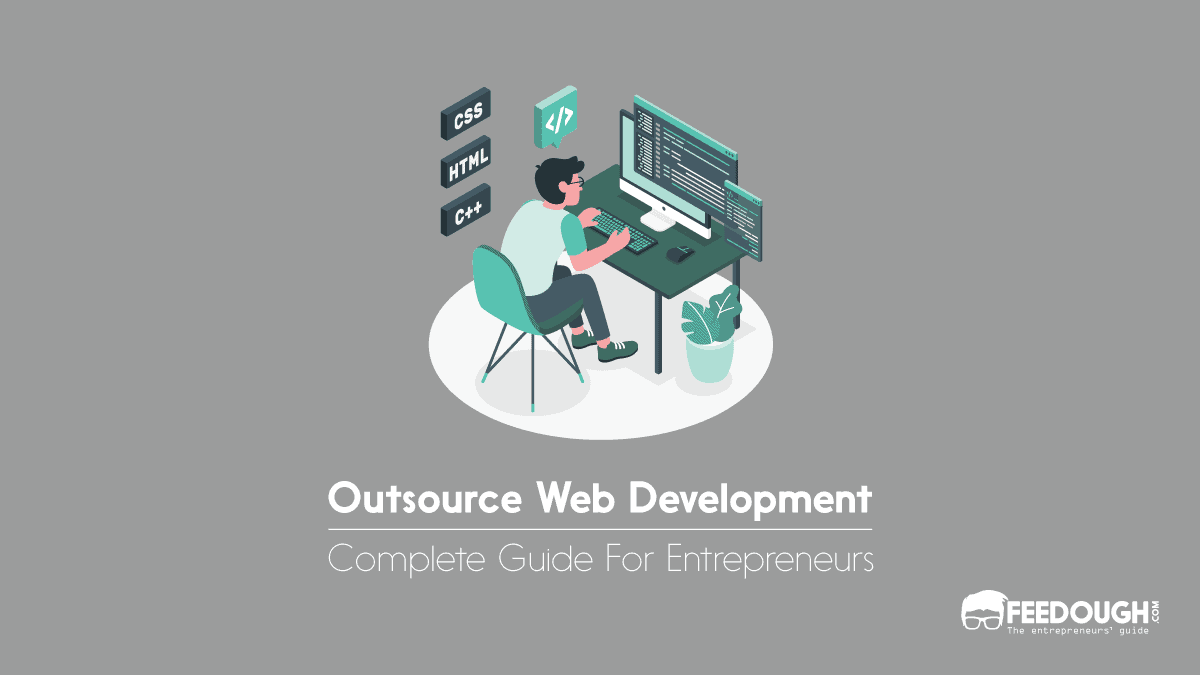The customer journey online isn’t the same as it was a few years ago. Every website needs to provide an engaging and positive experience for its customers.
I know you understand it well, or why would you search for guides on how to hire a web designer.
So, I’ll keep things straight, talking about where to find a web designer, how to know if they’re good, what qualifications to look for, how much to pay a web designer and more.
But for starters, I want to clarify a significant difference.
Web Designer vs Web Developer
Most people mistake these two roles.
A web developer is someone who codes websites. They build the website’s functionality with HTML, CSS, JavaScript, and other programming languages.
On the other hand, a web designer designs the look and feel of a website. They are often responsible for creating the graphics, layout, colours and fonts that go into making a site visually appealing.
In simple terms, a web designer’s job is to make the website look good, while a web developer’s job is to make the website work well.
How To Hire A Web Designer?
Now that this web developer and web designer distinction is out of the way, it’s time to focus on the practical steps you need to take to hire a web designer.
Understand Your Requirements
Before you even write that job description, take a step back and reflect on what it is you need. Write down everything about your project and what you’re looking for in a designer. Make a list of:
- Your design objectives
- Your target audience
- What your ideal website will look like
- The user flow you want to create
- The functionality and features you need
- Your budget
- Timeline and deadline
- Any requirements that need to be met, such as accessibility standards.
This process of introspection can help you identify what kind of qualities and skills you are looking for in a web designer.
Also know that the web designer will not only design how the webapp or application will look, but also its structure and how users will interact with it. So it’s best to have a clear idea of what functionality and features you need and how the design should look and feel.
Once you have a list of your requirements, it’s time to first create a job description and then research potential web designers.
Create Your Job Description
Your job description is the foundation of your search and should provide potential design candidates with a clear picture of what you need. It should include the following information:
- Job title
- Job responsibilities
- A description of the project
- Desired skills
- Qualifications required, such as educational background or years of experience
- Ideal location (onsite or remote)
- Compensation (salary, project fee, etc.)
It is vital not only for potential web designers to know the scope of your project but also for you to understand what you’re exactly looking for – a freelancer, an agency, an employee or just a virtual assistant.
Where To Find A Web Designer
When it comes to finding a web designer, you’ve three options – freelance platforms, industry-specific job boards, and portfolio websites.
Platform | Category | Description | |
|---|---|---|---|
Toptal | Freelance Platform | An exclusive network of top freelancers where web designers are rigorously vetted to ensure quality and expertise. | |
Upwork | Freelance Platform | A popular platform connecting businesses with freelancers, including web designers with various skill levels and rates. | |
99designs | Design Marketplace | A platform focused on design services, allowing clients to run contests or work directly with designers. | |
Fiverr | Freelance Marketplace | A platform for freelancers offering various services, including web design, at different price points and skill levels. | |
LinkedIn Jobs | Job Board | A professional networking site with a job board, connecting job seekers with opportunities, including web design roles. | |
Indeed | Job Board | A leading job search engine, featuring listings for web designers from entry-level to experienced positions. | |
Behance | Portfolio Website | A platform for creatives to showcase their portfolios, allowing clients to discover and hire web designers. | |
Dribbble | Portfolio Website | A platform for designers to share their work and connect with clients, focused on web and graphic design projects. |
- Freelance Platforms: It’s best to begin your search for a web designer on popular freelancing platforms such as Upwork, Freelancer and Fiverr. Here you will find hundreds of experienced professionals with varying skills and expertise. Be sure to read through potential candidates’ profiles and portfolios carefully to ensure they have the experience and knowledge required for your project.
- Industry-Specific Job Boards: If you are looking for an experienced web designer, industry-specific job boards may be a good option. Some examples include websites such as Indeed and Linkedin. Here you will find a wide range of candidates who specialise in different areas related to web design and development.
- Hunt Down Online Portfolios: If you’re looking for a more creative approach to hiring a web designer, consider exploring online portfolios. Numerous websites are dedicated to showcasing the work of talented designers and developers. Visit portfolio sites such as Behance and Dribbble and browse the available projects to find potential candidates who meet your requirements.
Know that there’s no dearth of talented web designers out there who can help you create an amazing website. You’ll get hundreds if not thousands of applications when you post your job on these web designer platforms. What’s most important isn’t the number of applications you get but the quality that comes with them.
Assess The Applications
As soon as you post your gig or job, you’ll receive applications from interested web designers. While this part seems exciting, it could soon turn overwhelming.
You need to take the time to assess each application carefully and narrow down your list of potential candidates.
Have benchmarks and criteria to evaluate the applications. This could be anything from experience to portfolio to communication style.
Here are some things I usually look for when assessing applications:
- A portfolio of past work: Their portfolio says a lot about their skill level, whether they can pull off the project you are looking for, and how well they communicate visually with design.
- Technical skill level: This includes both the development and design aspects of web design. Are they well-versed with the stack you need for the project?
- Communication Skills: Very important in any collaboration. Communication is key because you want to ensure you stay on the same page regarding deadlines and updates.
- Team skills: Designers work with developers, content creators, and other creatives. If they can’t collaborate and work in a team environment, you may end up with a less-than-perfect product.
- Time Management: This is critical for any project. A great designer should be able to manage their time effectively to meet deadlines.
- Cost to company: The cost (both monetary and non-monetary) of hiring a web designer forms one of the critical factors in the selection process. Think long-term when looking for a web designer – sometimes, the most expensive option isn’t always the best one. Usually, a full-time web designer costs between $30,000-$50,000 per annum, depending on their experience and the project’s complexity. A good freelancer, however, could charge anywhere between $25-$50 an hour for their services.
When assessing job aspirants, you can also contact their references and previous employers to get an idea of their soft skills and hard skills. Ask about their ability to collaborate, their communication style, and how well they manage projects.
For freelancers, you can read the reviews they have received from other clients to gauge the quality of their work.
The Interview
Application screening will probably help you remove quite a few candidates from the list. However, it’s not enough to make an informed decision on whom to hire. This is why you should conduct interviews with all remaining contenders.
It can be a virtual or in-person interview, depending on the situation. But in any case, you must ask some relevant interview questions.
For instance, inquire about their experience with the latest web technologies and approaches (e.g., responsive design). Question them about their design process and how they collaborate with web developers.
An interview is a great way to identify if the web designer can handle your project. You’ll be able to see how they think, their level of expertise, and overall compatibility with your team.
The Negotiation
This is the bottom of the funnel. After you have identified the perfect web designer for your project, it’s time to make an offer. Take into account the scope of work and timeline when negotiating a rate; they may need to adjust their fee depending on those factors.
Even if money is tight, be sure to negotiate fairly with your web designer—they should be compensated adequately for their work.
Finally, don’t forget to sign a contract that outlines the details of your working relationship. For freelancers, it’ll be:
- Freelance agreement: It’s the contract between the freelance web designer and you, which outlines the payment details for their services.
- Non-disclosure agreement: It’s a contract that prohibits the web designer from sharing sensitive company information with anyone else.
- Work-for-hire agreement: This is when your company assumes ownership of all work the web designer creates.
For a full-time employee:
- Employment contract: This contract should include job descriptions, salaries and benefits.
Besides these, you can have them sign NDA(non-disclosure agreement), NCA(non-compete agreement) and other agreements to protect your Intellectual Property (IP) rights.
The Do’s & Don’ts Of Hiring A Web Designer
While hiring a web designer, it is essential to follow some important do’s and don’ts:
Do’s
- Know your goals: Before hiring a web designer, knowing what you want for your website is important.
- Spend time vetting: Ensure that you go through the portfolio and experience of the web designer before hiring them. Do they have expertise in the area you need? Do their past experience include clean website design? Do they have positive reviews?
- Communicate your expectations: Make sure that you communicate to the web designer what you require and what your expectations are.
- Think long term: Both in the design of the website and the relationship with the web designer, think long term. Ask questions to ensure that they are a good fit for your needs over time.
Don’ts
- Hire without Doing Your Research: Ensure that you research potential web designers before hiring them. Check out their portfolio and reviews to ensure that they are the right fit for your website design needs.
- Neglect Communication: Ensure communication is maintained throughout the entire process so both parties are clear on expectations and timelines.
- Go Cheap: When it comes to web design, going with the cheapest option isn’t usually a good idea. Consider your budget, but also consider quality and experience when making your decision.
- Be Unclear: Make sure you clearly define the scope of work needed so there is no confusion or misunderstanding.
A startup consultant, digital marketer, traveller, and philomath. Aashish has worked with over 20 startups and successfully helped them ideate, raise money, and succeed. When not working, he can be found hiking, camping, and stargazing.
